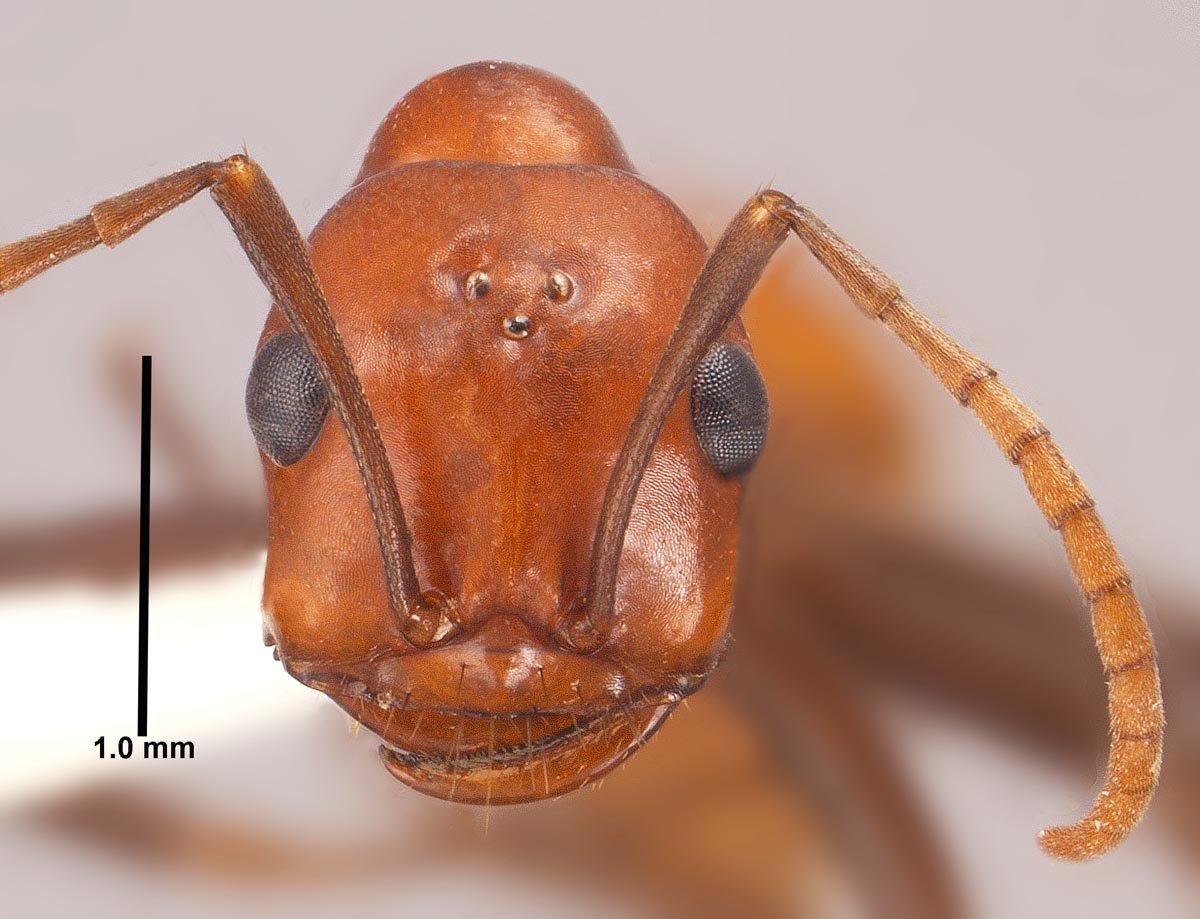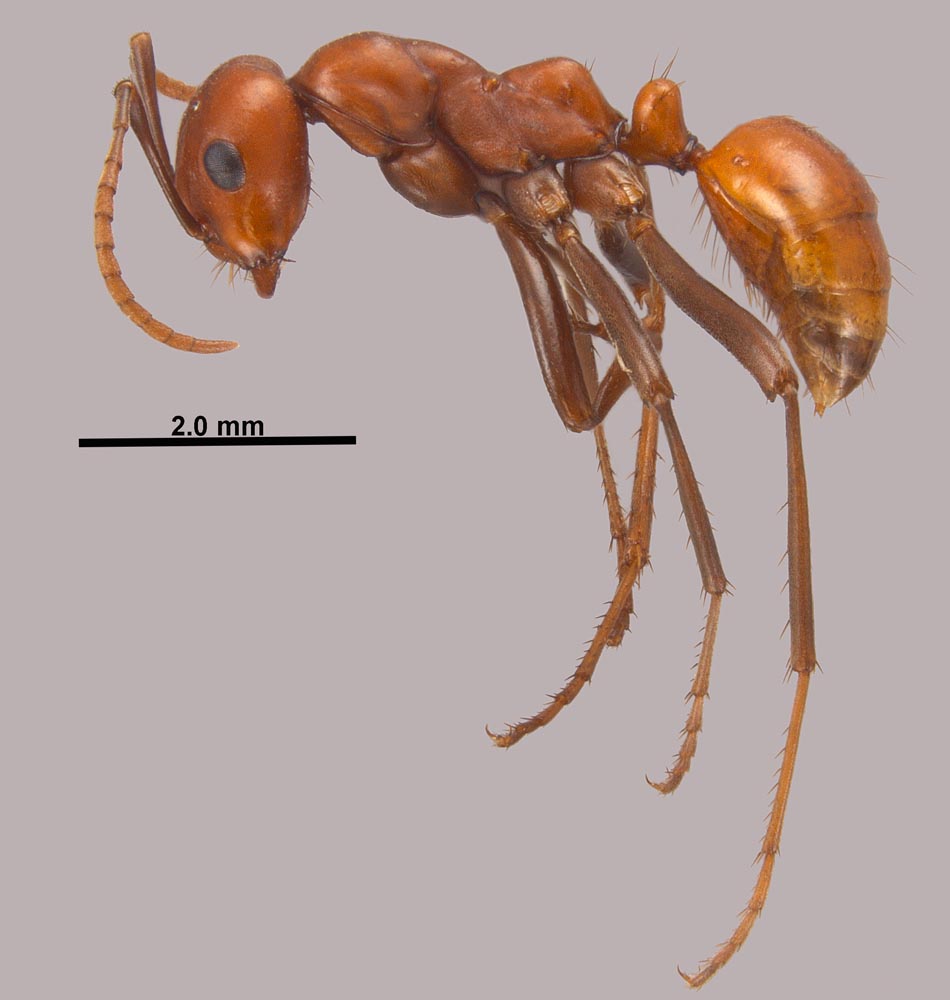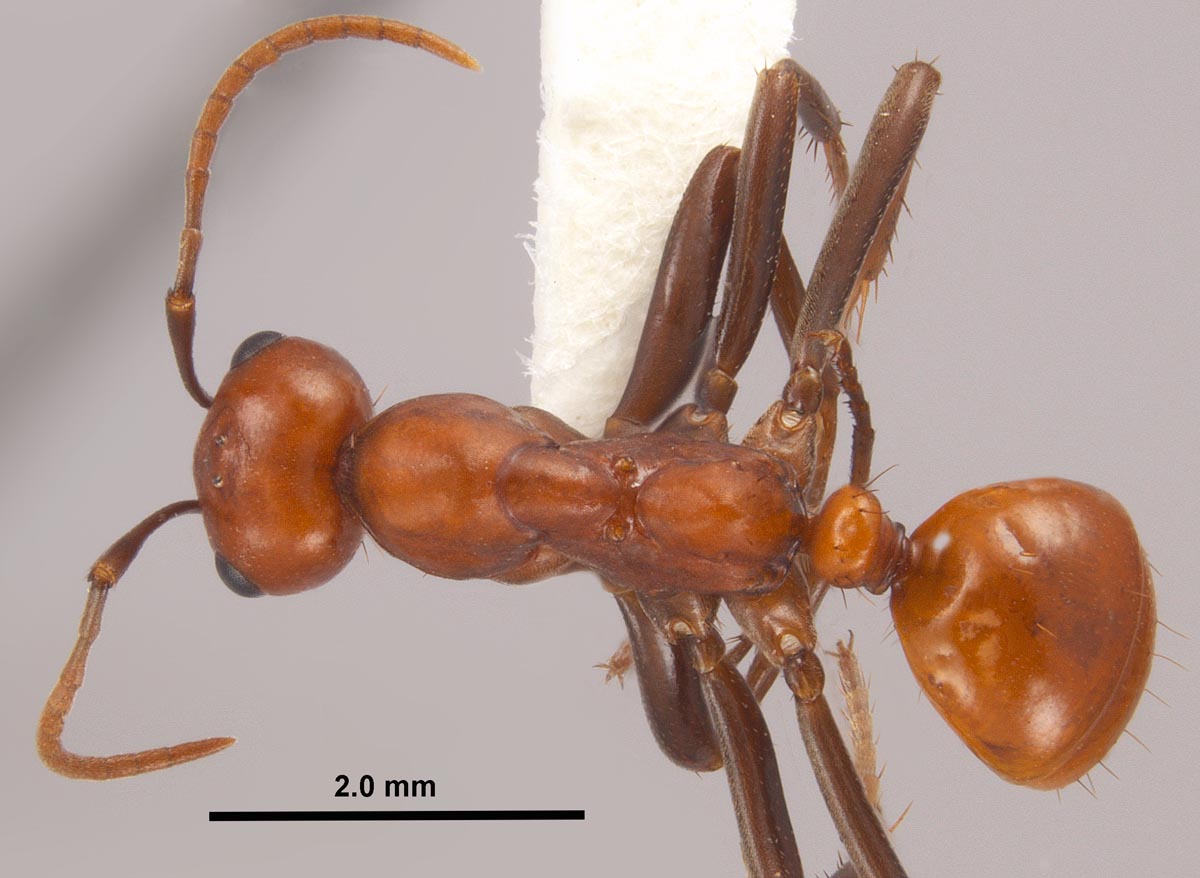Subfamily FORMICINAE by Joe A. MacGown, uploaded 20 August 2014 |
||

|
||
Polyergus montivagus, full face view of a worker (photo by James Lewis and Joe MacGown) |
Polyergus montivagus, profile view of a worker (photo by James Lewis and Joe MacGown) |
Polyergus montivagus, dorsal view of a worker (photo by James Lewis and Joe MacGown) |
Overview Polyergus species are obligatory or true slave-making ants. In nest founding, the female enters a nest of the host species, eventually kills the rightful queen, and uses the host workers to tend her brood. Polyergus colonies conduct slave raids on nests of various species of Formica, and workers of the host are taken and used by the Polyergus colony to feed and rear the brood and excavate the nest. Polyergus workers are incapable of surviving without slaves. In laboratory colonies, a colony without slaves will starve to death even when plentiful food is available. (Hedlund, 2007; King and Trager, 2007). Polyergus montivagus is an average sized, somewhat shiny, reddish-brown species with sparse to no erect hairs on head and mesosoma that uses Formica pallidefulva as a host. Taxonomic History (from Trager 2013, Bolton 2014) Identification This species can be separated from P. longicornis by its lack of infuscation at the apex of gaster and lack of erect hairs on the vertex, unlike P. longicornis, which has gastral infuscation and numerous erect setae present on vertex. Additionally, P. montivagus uses Formica as a host, whereas P. longicornis uses F. pallidefulva. It differs from P. lucidus in that the head and alitrunk are subopaque, whereas, in P. lucidus, the entire body is shining. Polyergus montivagus differs from P. mexicanus by having much longer scapes, scapes in P. mexicanus are not as long as interocular distance; by not having the antennal scapes terminating in a club (scapes in P. mexicanus enlarged distally forming a club); and by having sparse pubescence on the gaster, whereas, pubescence on gaster of P. mexicanus is dense). Biology and Economic Importance This species poses little in the way of economic importance, as is rarely encountered. However, if provoked or handled a worker could inflict a somewhat painful bite. Distribution (from Trager 2013 and MEM records) CANADA: Ontario. This species has been reported from Colorado and Florida (King and Trager, 2007; Smith, 1947), and it has been collected In Mississippi in Chickasaw, Lowndes, and Oktibbeha Counties (MEM records). Literature Cited Hedlund, K. S. 2007. The Ants: North America Catalog: Genus Polyergus. http://www.cs.unc.edu/~hedlund/playpen/dev/ants/catalog/ (accessed 6 June 2008). King, J. R. and J. C. Trager. 2007. Natural history of the slave making ant, Polyergus lucidus, sensu lato in northern Florida and its three Formica pallidefulva group hosts. 14 pp. Journal of Insect Science 7: 42, available online: insectscience.org/7.42 Smith, M. R. 1947. A Study of Polyergus in the United States, based on the workers (Hymenoptera: Formicidae). The American Midland Naturalist 38: 150-161. Trager, J. C. 2013. Global revision of the dulotic ant genus Polyergus (Hymenoptera: Formicidae, Formicinae). Zootaxa 3722 (4): 501–548. Wheeler, W. M. 1915. Some additions to the North American ant-fauna. Bulletin of the American Museum of Natural History 34:389-421. Links |
||




